6 Benefits of Clean and Jerk & Muscles It Works
Author:
Reviewed by:
(21 years of Oly Lifting experience)
Unlock your full potential by engaging with our experts and community! Have questions about your fitness journey or looking for expert advice on weightlifting techniques? Don’t hesitate — leave a comment below and Sergii Putsov will provide a personalized answer and insights to help you reach your goals.
Torokhtiy is reader-supported. Some links are affiliate links, and we may earn a commission at no extra cost to you. See our disclosure page for details.
The Olympic clean & jerk is one of the best examples of an amazing combination of raw power and supreme precision.
And this is not just a weightlifting drill, but a masterful display of real human potential.
This classic two-part lift is not solely captivating audiences worldwide, but is also an ultimate test of strength, coordination and mobility. So let’s explore all the benefits of clean and jerk in this article.
The clean and jerk offers total body training. Strength, power output and rate of force development are key benefits of the exercise. The main benefits of clean and jerk also include coordination, balance, and flexibility improvement also cardiovascular fitness boost and calorie burn, enhancing muscle growth and bone health.
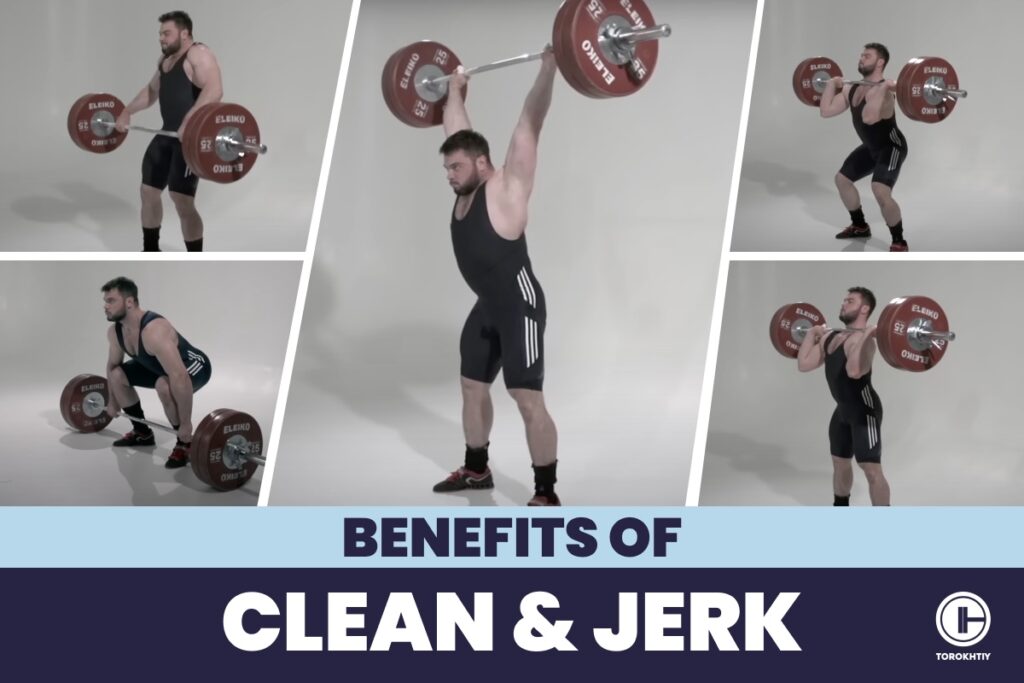
So what is a clean and jerk? This exercise is real poetry in motion. In every rippling muscle and strained sinew, it speaks a language of dedication and discipline. It`s benefits reach far beyond the impressive spectacle and competitive platform.
For various sport athletes and fitness lovers C&J could be a real game-changer, a special element that elevates sessions to a completely new level of quality.
What Is the Clean and Jerk?
The clean and jerk exercise is one of two classical and standard exercises in competitive Olympic weightlifting. The name explaining that is consist of two movement phases: the clean and the jerk.
In the first on (CLEAN) – athlete lifts the bar from the platform to a front rack position. In this position the lifter`s elbows are high and pointing forward. and the bar is resting on shoulders and on the palms of hands.
The JERK phase begins after the clean is completed. The weightlifter drives the barbell in an overhead position. The good lift is when arms amd legs are completely straight and bar is under full control.
While C&J is a singular exercise on competition, each of its phases is a separate exercise on its own, each with solid benefits.The Clean & Jerk is a compound movement that tests development of almost every muscle group, with particular impact on back, legs and shoulders. It also requires and improves mobility, flexibility, balance and coordination.
The C&J is a full body movement that challenges a wide range of muscles. Let’s take a look on the main clean and jerk muscles and their roles:
1. Quadriceps
Location: at the front of your thighs.
Action: the quads are engaged during the initial pull from the ground, in the squatting motion when catching the barbell, and in the dip and drive of the jerk.
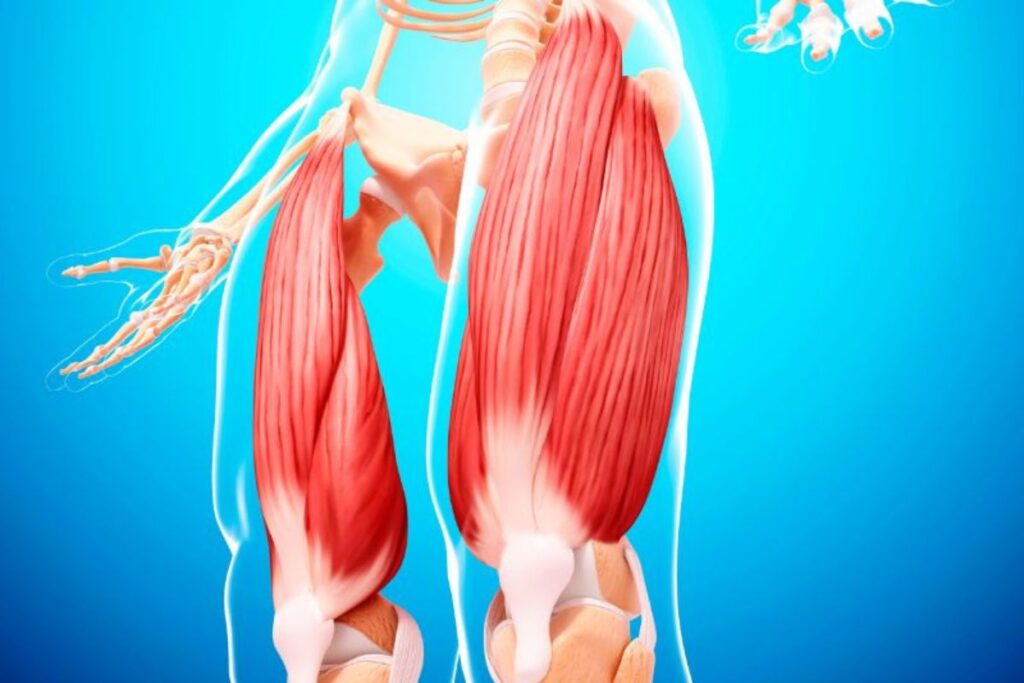
2. Hamstrings
Location: the muscles at the back of your thighs work in harmony with the quadriceps to extend the hips and knees.
Action: helping to power the barbell upward in both the clean and jerk phases.
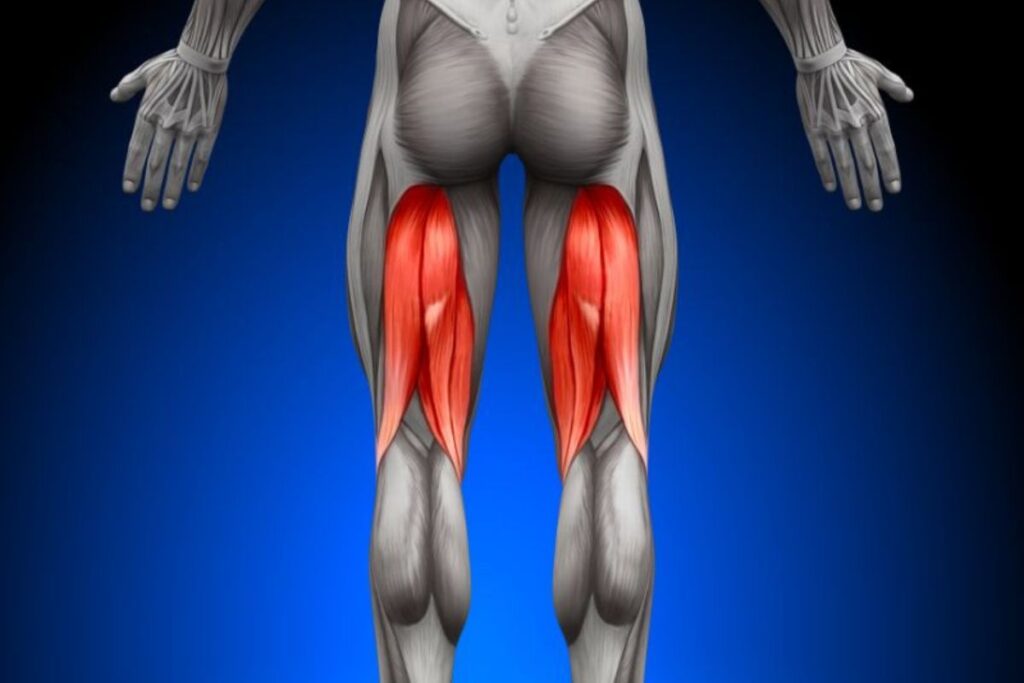
3. Gluteal Muscles
Location: Rear part of pelvis
Action: gluteal muscles play a significant role in the clean phase, primarily in the extension of the hip, which is crucial for pulling the barbell off the ground and standing up from the clean.
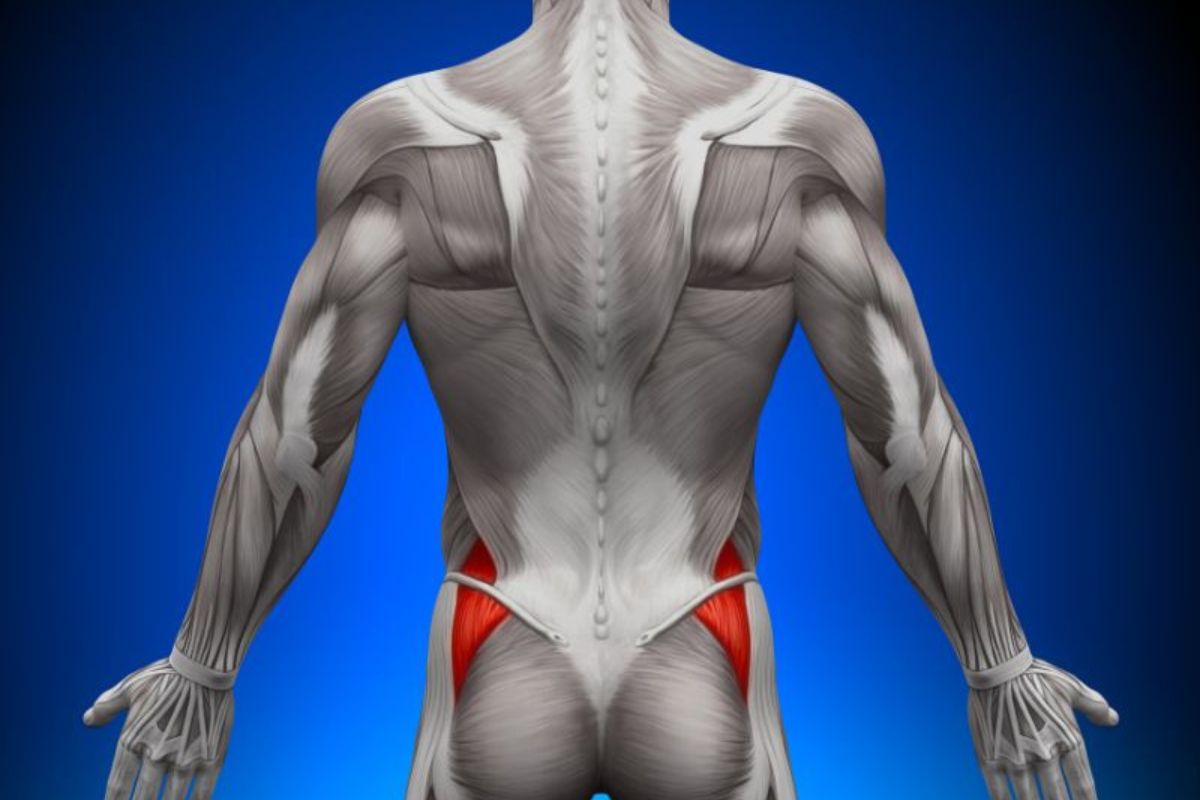
4. Erector Spinae
Location: from upper part of pelvis all over up till the upper neck and back of the head along your spine.
Action: maintaining a straight back and stabilized posture throughout the lift, especially when pulling the barbell from the ground and receiving it in the front squat position.
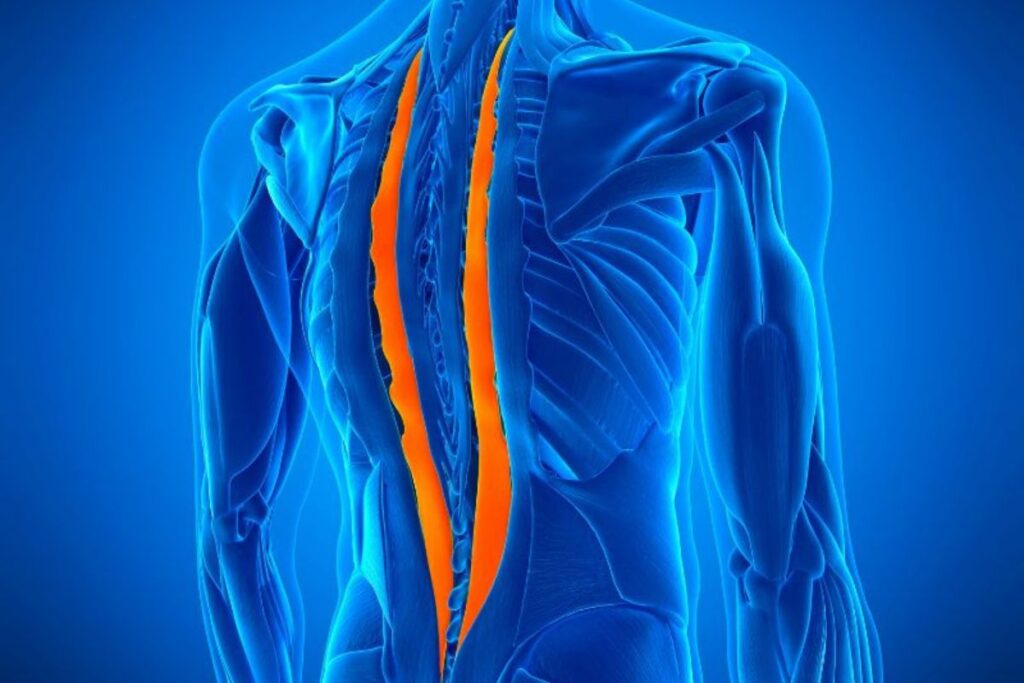
5. Trapezius
Location: large muscle across your upper back and neck.
Action: helps with the “shrugging” during the second pull of the clean, and with stabilization of the bar overhead during the jerk.
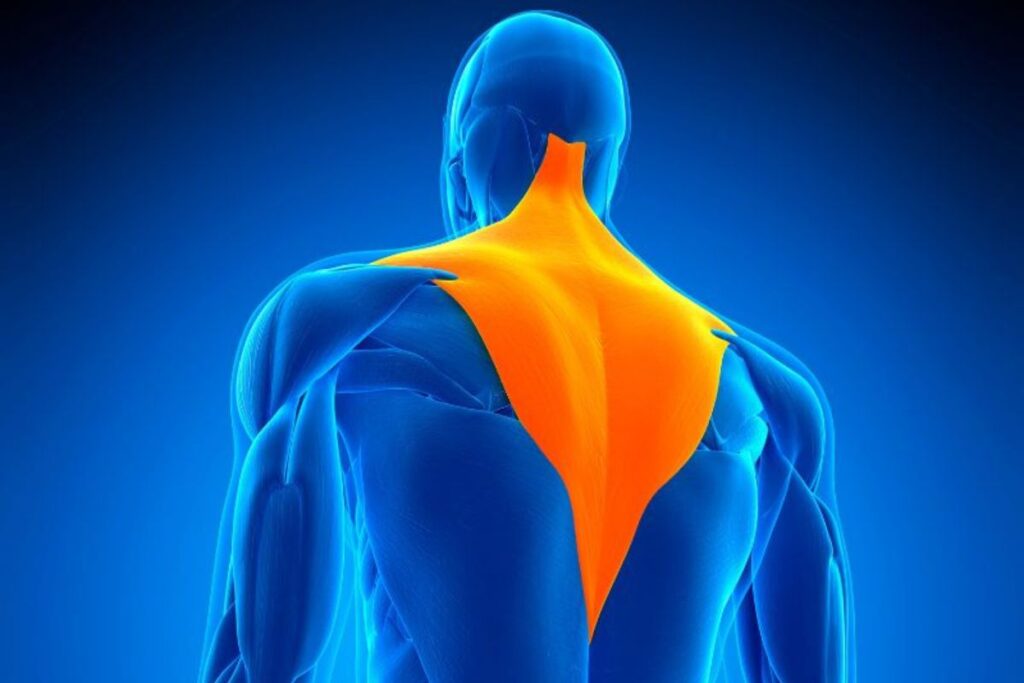
6. Deltoid
Location: three parts of this muscle covers the shoulder joint, clavicle and scapula a bit.
Action: engaged heavily in the jerk, when the barbell is pushed overhead and kept there until the lift is complete.
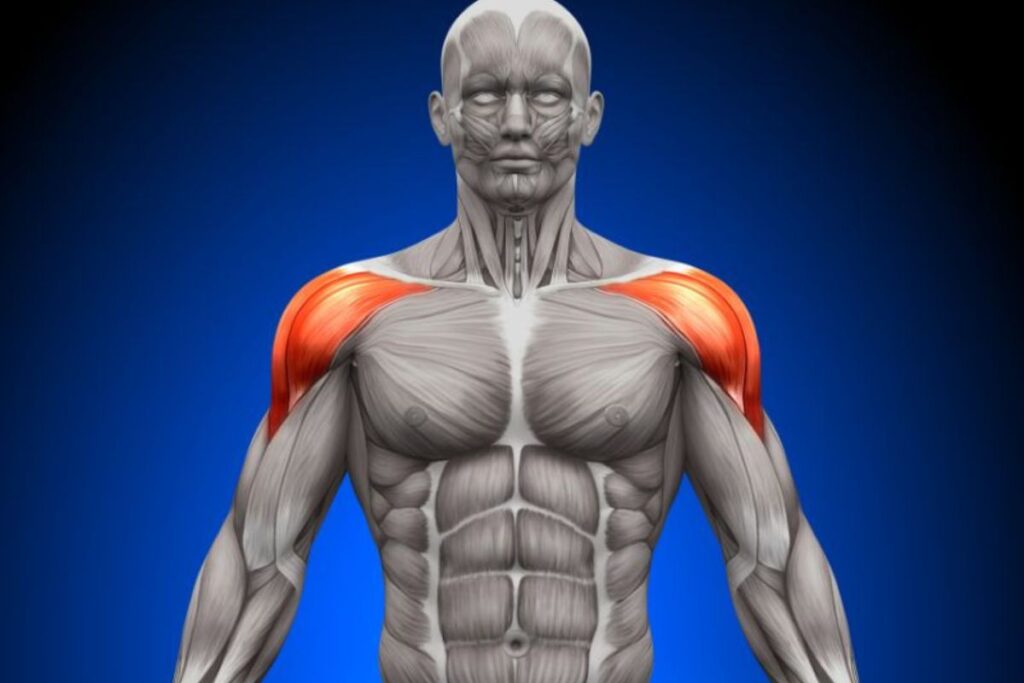
7. Latissimus Dorsi
Location: it is a large, flat muscle located in the back that stretches to the both sides, behind the arm, and is partially covered by the trapezius near the midline.
Action: responsible for keeping the bar close to body during the clean and providing stability during the jerk.
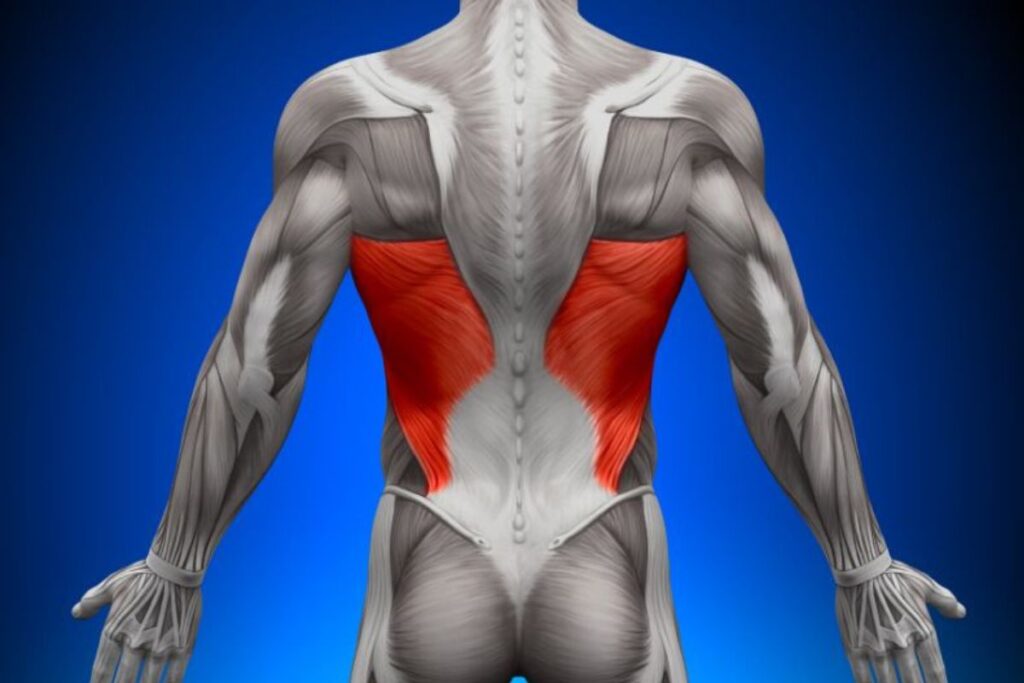
8. Rhomboids
Location: between the spine and the shoulder blades, specifically in the upper back region.
Action: work to stabilize shoulder blades, especially when the barbell is overhead.
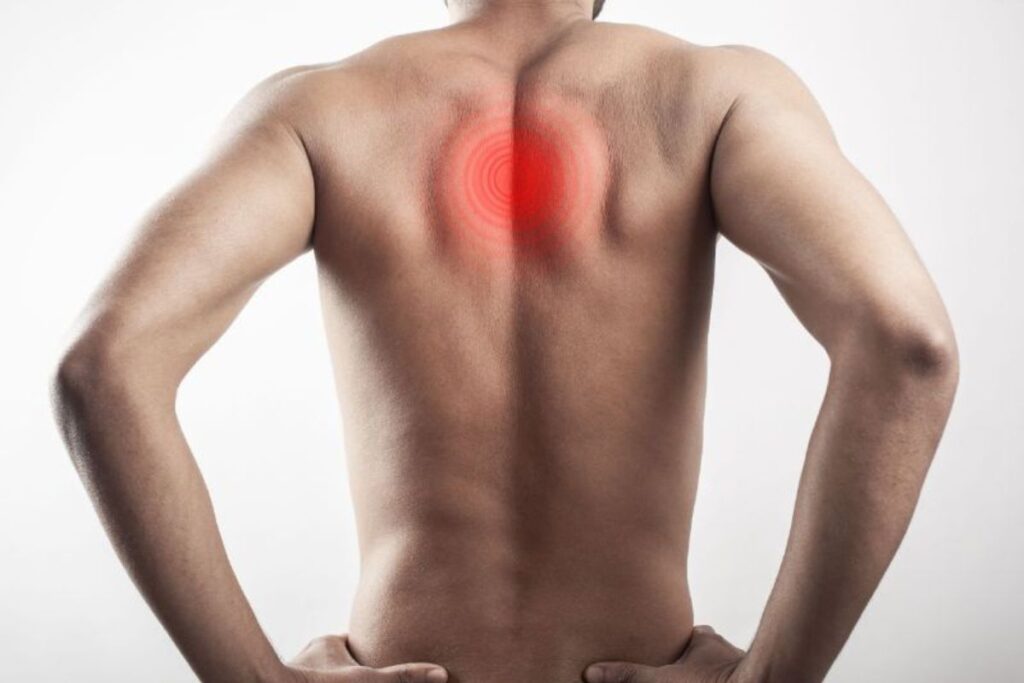
9. Forearms and Grip Muscles
Location: the lower part of the arm.
Action: engaged throughout the lift, as they are necessary to maintain a secure grip on the bar.
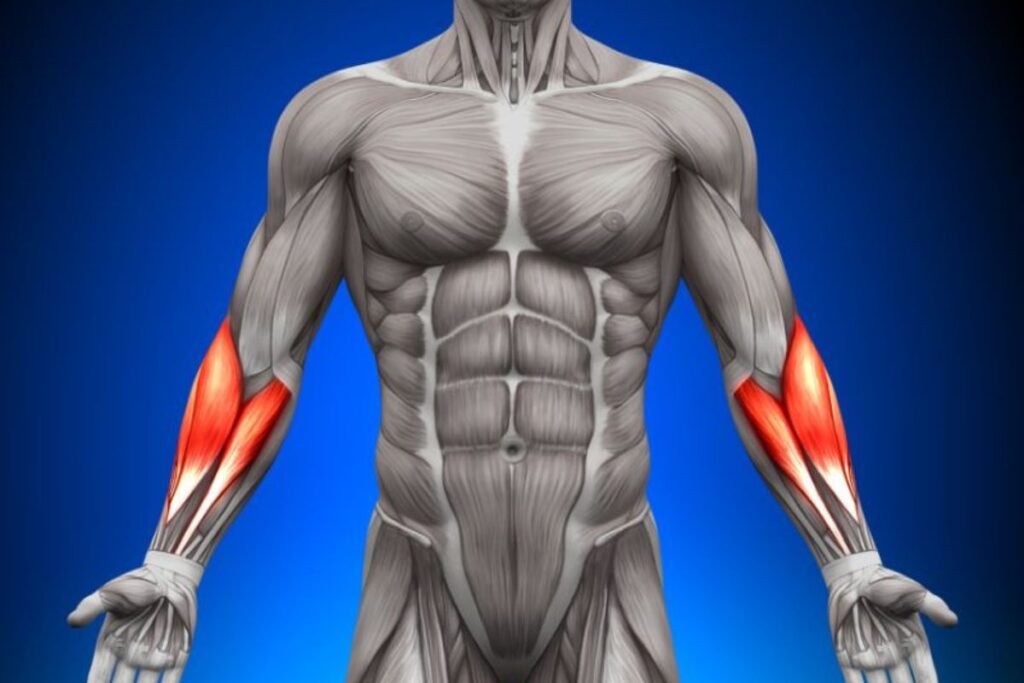
10. Calves Muscles
Location: rear part of shins.
Action: play an important role during the extension phase of both the clean and the jerk, aiding in the explosive ‘jump’ that helps drive the barbell upwards.
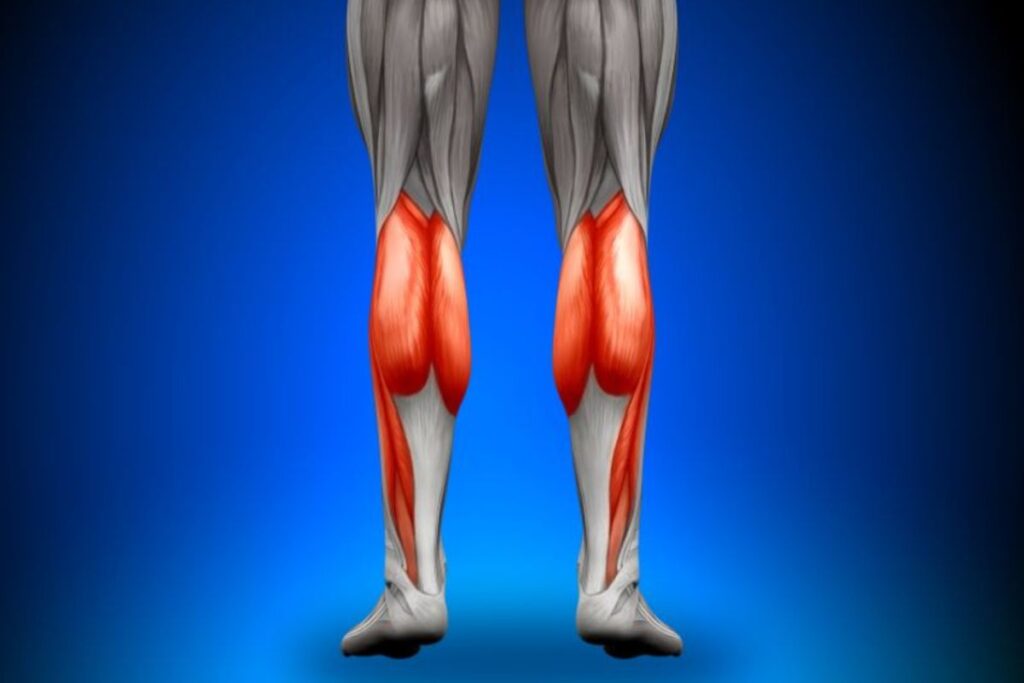
11. Core Muscles
Location: abdominals on the front part of the core and obliques are on the sides.
Action: core muscles are engaged throughout the lift for stability.
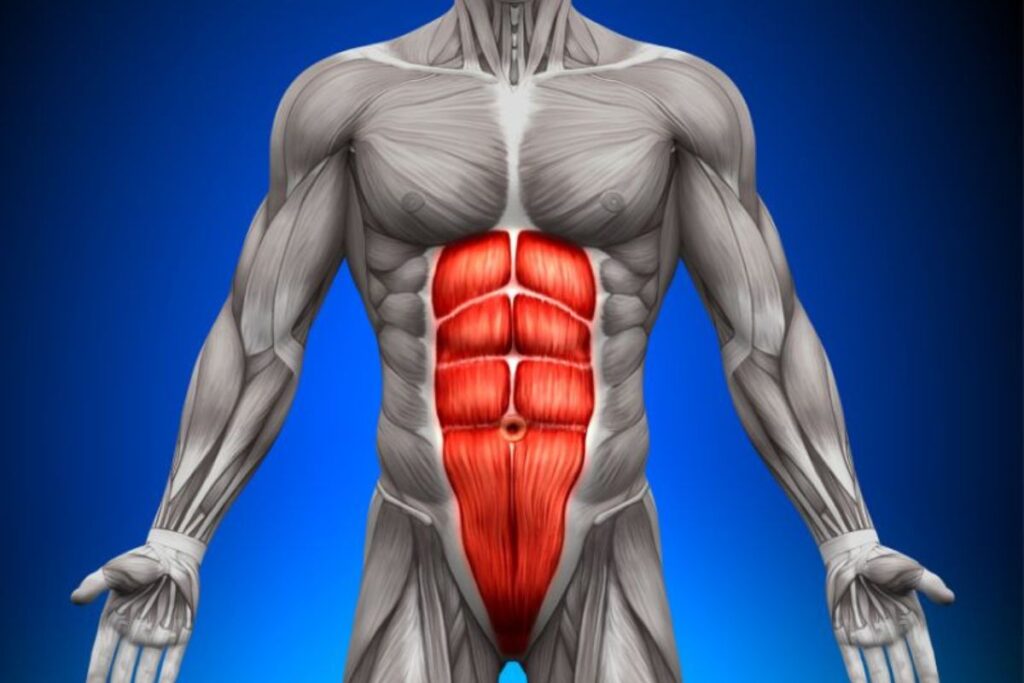
12. Triceps
Location: located on the back of the upper arm, extending from the shoulder to the elbow.
Action: triceps engagement is critical in the jerk phase, as they help to extend the arms and stabilize the bar overhead.
The clean & jerk is a highly complex movement engaging muscles from head to toe and providing real power and conditioning workout.
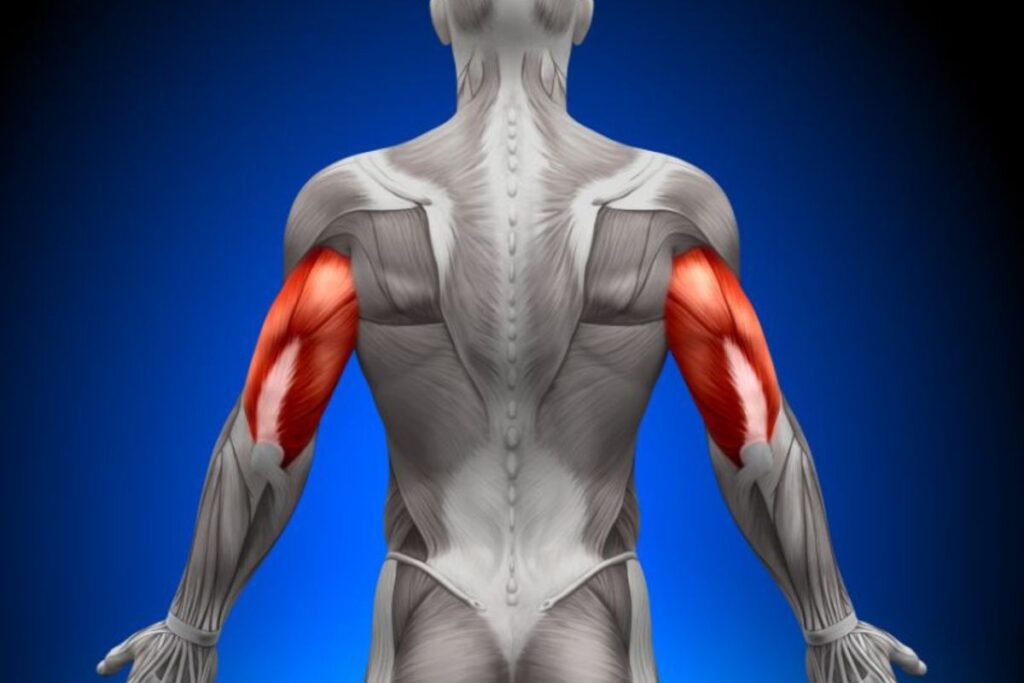
6 Benefits of the Clean and Jerk
If you’re an athlete, you probably already know at least some of the benefits of the clean and jerk, but don’t worry, we’ll go into more depth in a second.
But if you’re not necessarily an athlete or a weightlifter, you’d still benefit from it because there’s more to it than just strength gains. It enhances balance and motor control, positively influences hormone levels and promotes bone health.
Basically, it contributes to overall well-being and longevity, so you should give it a try! You also don’t need a fully equipped gym for that one which will train your whole body.
✅ Full Body Training
One of the most remarkable benefits of the Clean & Jerk is its ability to engage and challenge multiple muscle groups simultaneously. From the lower body, including legs and glutes, to core muscles, upper body, and back muscles, this exercise leaves no muscle behind.
Also, the compound nature of this exercise makes sure that no two workouts are ever the same and it constantly challenges your body in new ways as you improve in form and increase in strength. This dynamic engagement helps with comprehensive muscular development and improves both strength and endurance in the entire body.
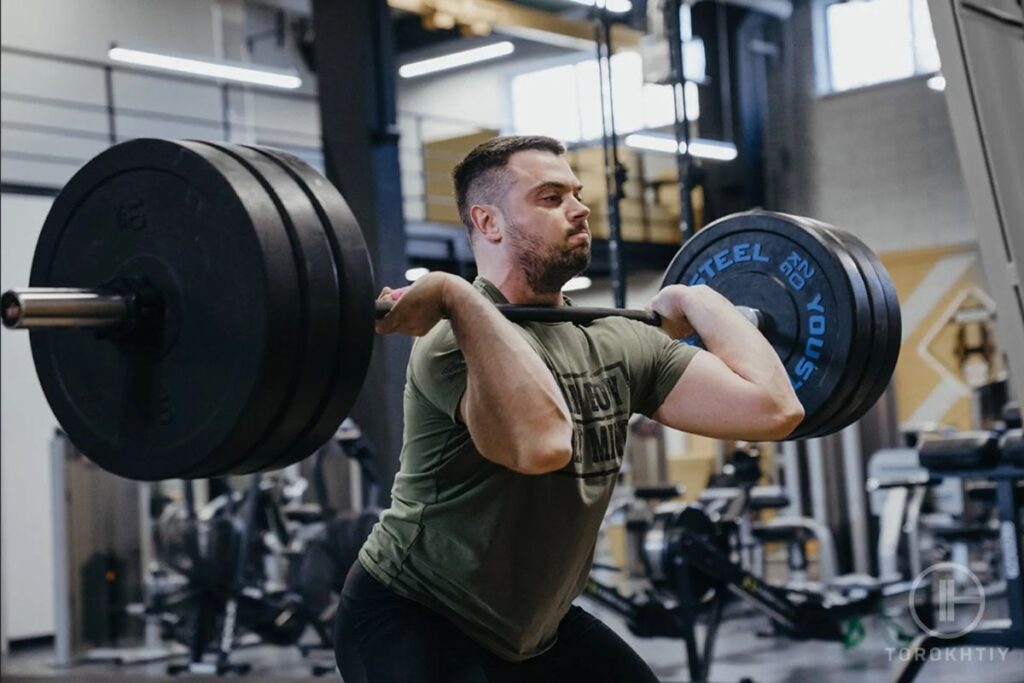
✅ Effective Calorie Burn Tool
If you’re looking for an efficient way to burn calories and shed excess fat, the C&J is a solution. This exercise is like a wildfire in a haystack, igniting your metabolism and rapidly incinerating calories. With each explosive lift, you’re torching through calories at an exceptional rate.
Whether you aim to manage your weight or lose fat, the Clean and Jerk can be an ally in achieving your goals.
The high intensity of this exercise means that it also offers significant afterburn effects, where your body continues to burn calories long after your workout has finished, which enhances its efficacy as a weight loss and management tool even more.
✅ Explosiveness Development
Main C&J benefit – emphasis on dynamic power. The explosive movements involved in the Clean and Jerk can help you develop that power, enabling you to leap with confidence and conquer physical challenges with ease. You’ll feel like you can leap tall buildings (or at least small boxes) in a single bound!
This explosiveness translates well into other sports and activities, especially those that need quick bursts of power like sprinting, jumping, or throwing. regular practice can lead to significant improvements in overall athletic performance.
✅ Coordination Improvement
Each phase of the C&J exercise demands coordination, balance, and precision. As you engage in this lift, not only will you become stronger, but you’ll also hone your coordination skills, becoming a more skillful and graceful mover in the process.
This improved coordination is crucial for athletes, especially in complex sports that need multi-directional movements and precise timing. The intricate technique of the clean & jerk helps refine your body’s ability to synchronize movements efficiently, and improves your agility and reaction times.
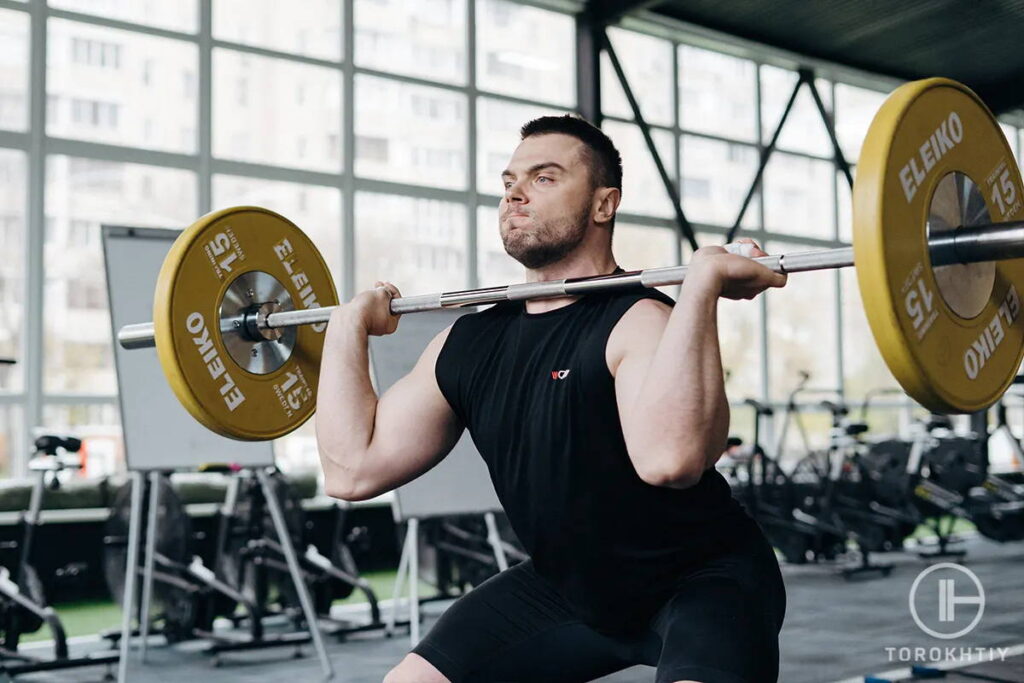
✅ Flexibility and Mobility Enhancement
While the C&J is renowned for its strength and power enhancing properties, it also promotes mobility and flexibility, particularly in key areas such as the hips, ankles, shoulders and wrists.
Also if your goal is to increase clean and jerk, you should pay a lot of attention to flexibility and mobility progress.
This movement boost can carry over to other aspects of your fitness journey and daily activities because you need to achieve a full range of motion during the lift, it compels you to maintain and improve your flexibility, which is great not only for performance but also for reducing the risk of injuries.
If you practice regularly, your key joins will remain flexible and functional, which can improve your effectiveness in performing daily tasks and reduce the likelihood of issue related to joints.
✅ Strengthening of the Bones
Weight-bearing exercises like the Clean & Jerk have a positive impact on bone health and density. By subjecting your bones to controlled stress and resistance, you stimulate their growth and strength, fortifying your internal architecture and promoting resilience.
This is especially important as you age because it helps combat the natural decline in bone density. For younger people, it lays a strong foundation for bone health that can help prevent osteoporosis and other bone diseases later in life.
I guess there are much more clean and jerk benefits.
How To Perform A Clean And Jerk Exercise?
Performing C&J involves a sequence of a number of well coordinated movements. Let’s take a look on each phasу of clean and jerk technique more deeply:
1. Starting Position
In the starting position also known as setup athlete must position himself in a squat stance, with feet hip-width apart. The barbell should be on the platform, over midfoot. Next, need to bend down and grip the barbell slightly wider than shoulder-width apart.
Grip should be hookgrip style. Hips position must be lower than shoulders, back flat, chest up, and eyes focused straight ahead. Arms should be straight and relaxed.
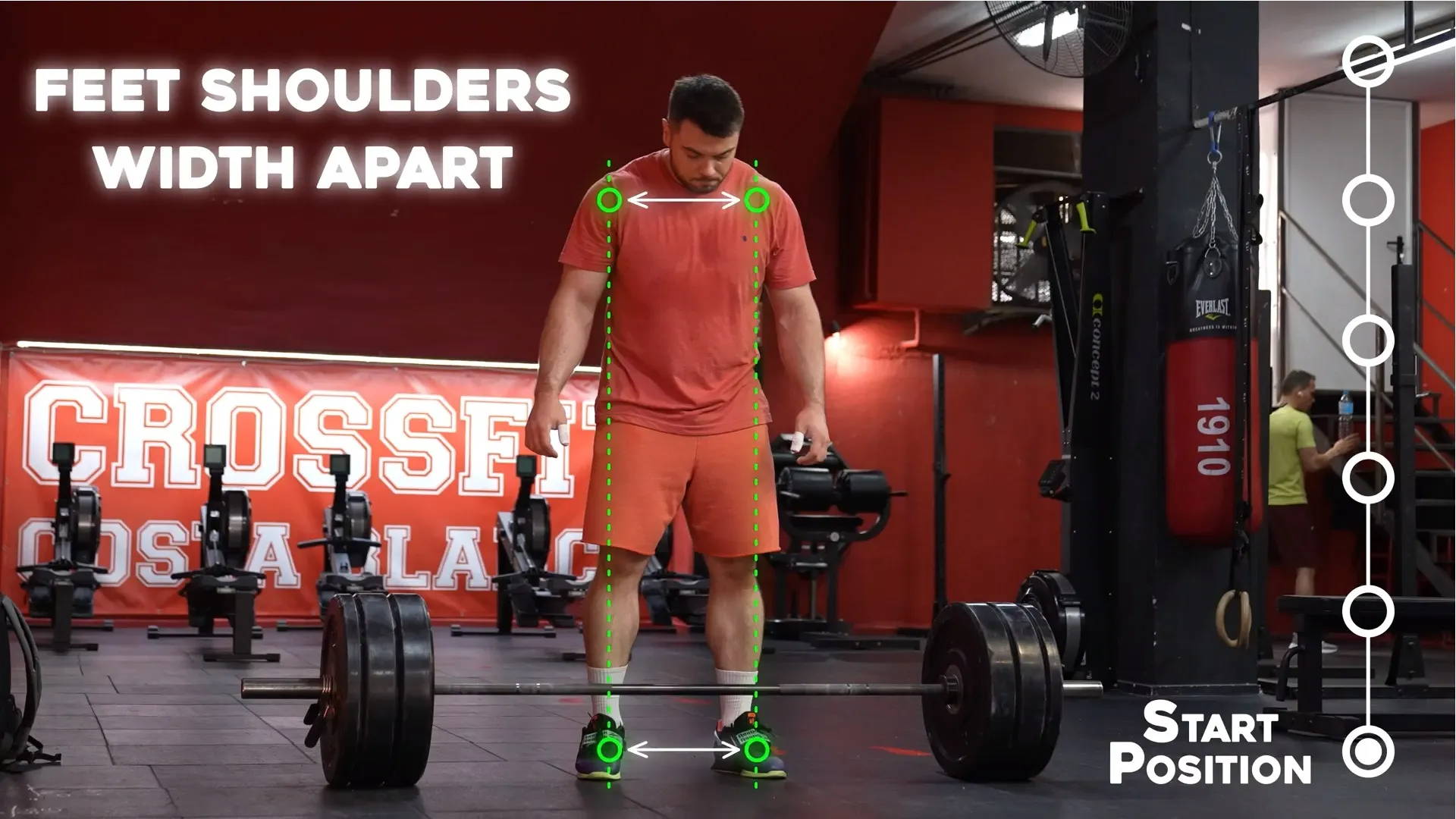
2. First Pull
This part begins with the liftoff of the barbell from the platform. Push through your midfoot to begin the lift, extending your hips and knees. The back angle should stay the same; it should not change to more horizontal. The bar should remain as close as possible to the body, and the torso should rise at the same rate as hips.
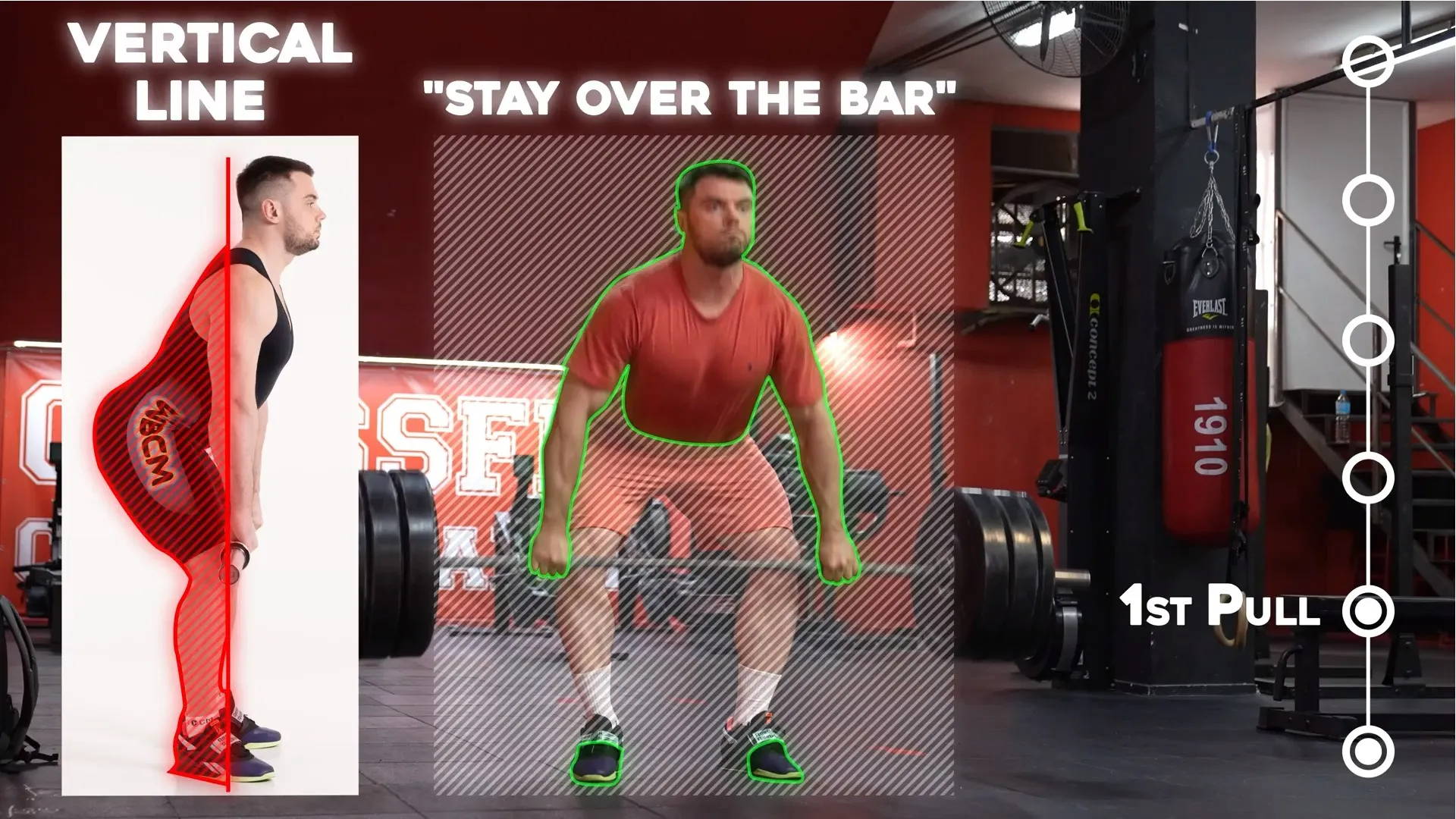
3. Second Pull and Power Position
Once the bar passes your knees, explosively extend hips, knees, and ankles and drive the barbell upward. Torso should come to a vertical position. This is the most powerful part of the movement and should resemble a jumping motion.
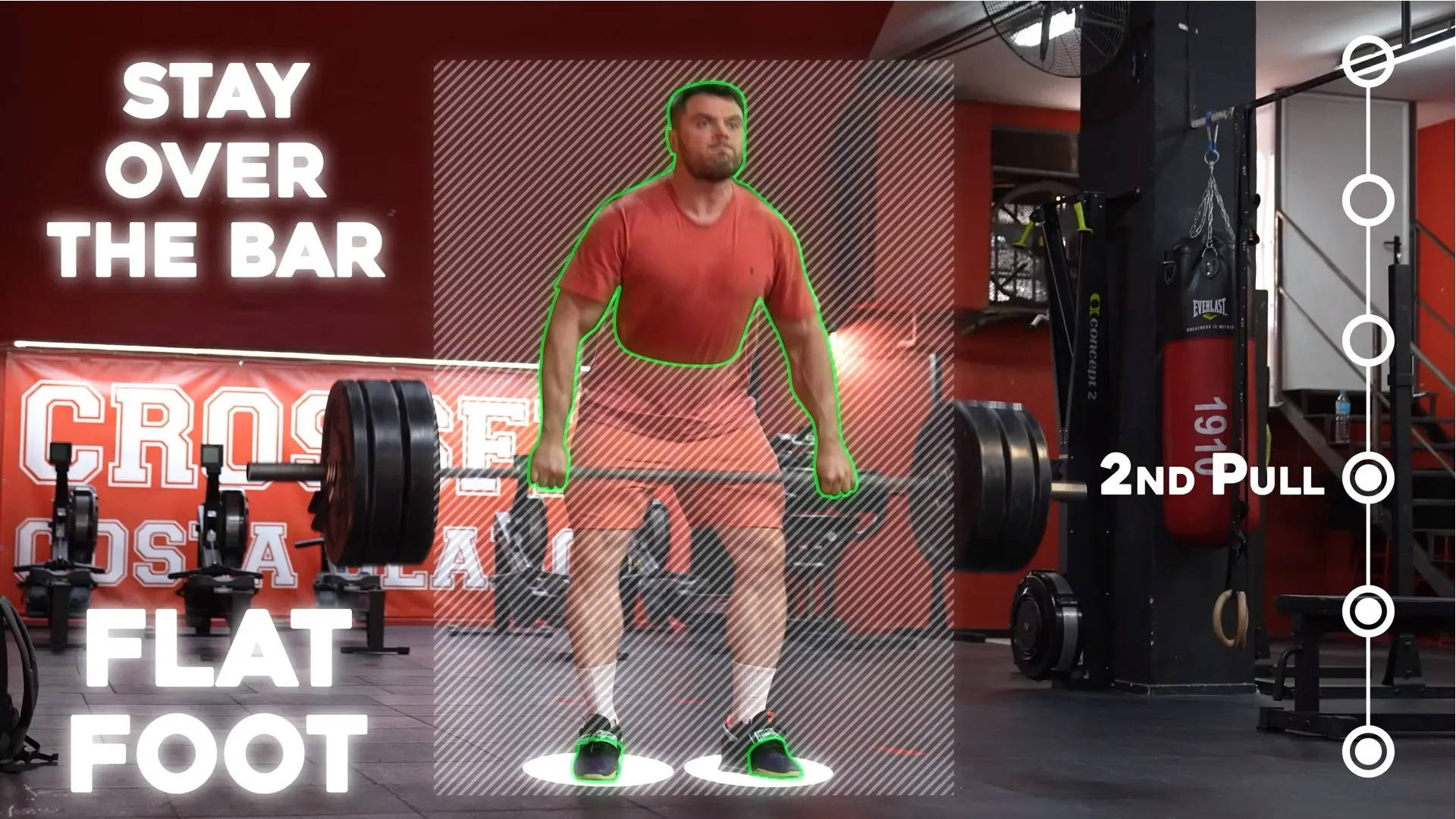
4. Turnover & Catch Position
Once the bar reaches maximum height, rotate your elbows around catching the bar on the front rack position.
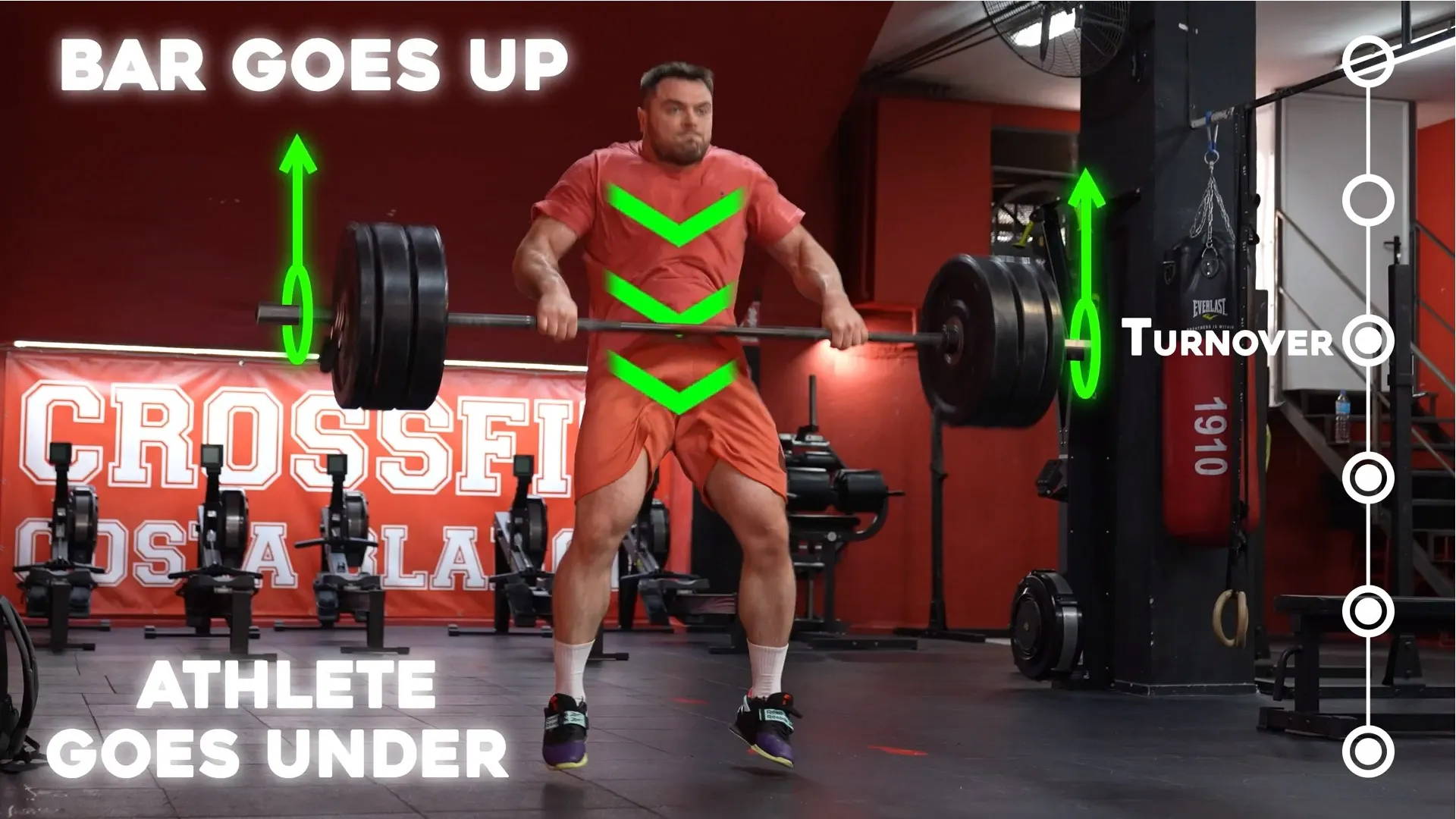
It is important to maintain full grip and elbows high pointing forward. Simultaneously and quickly, bend knees and hips to drop into a full squat position, catching the weight.
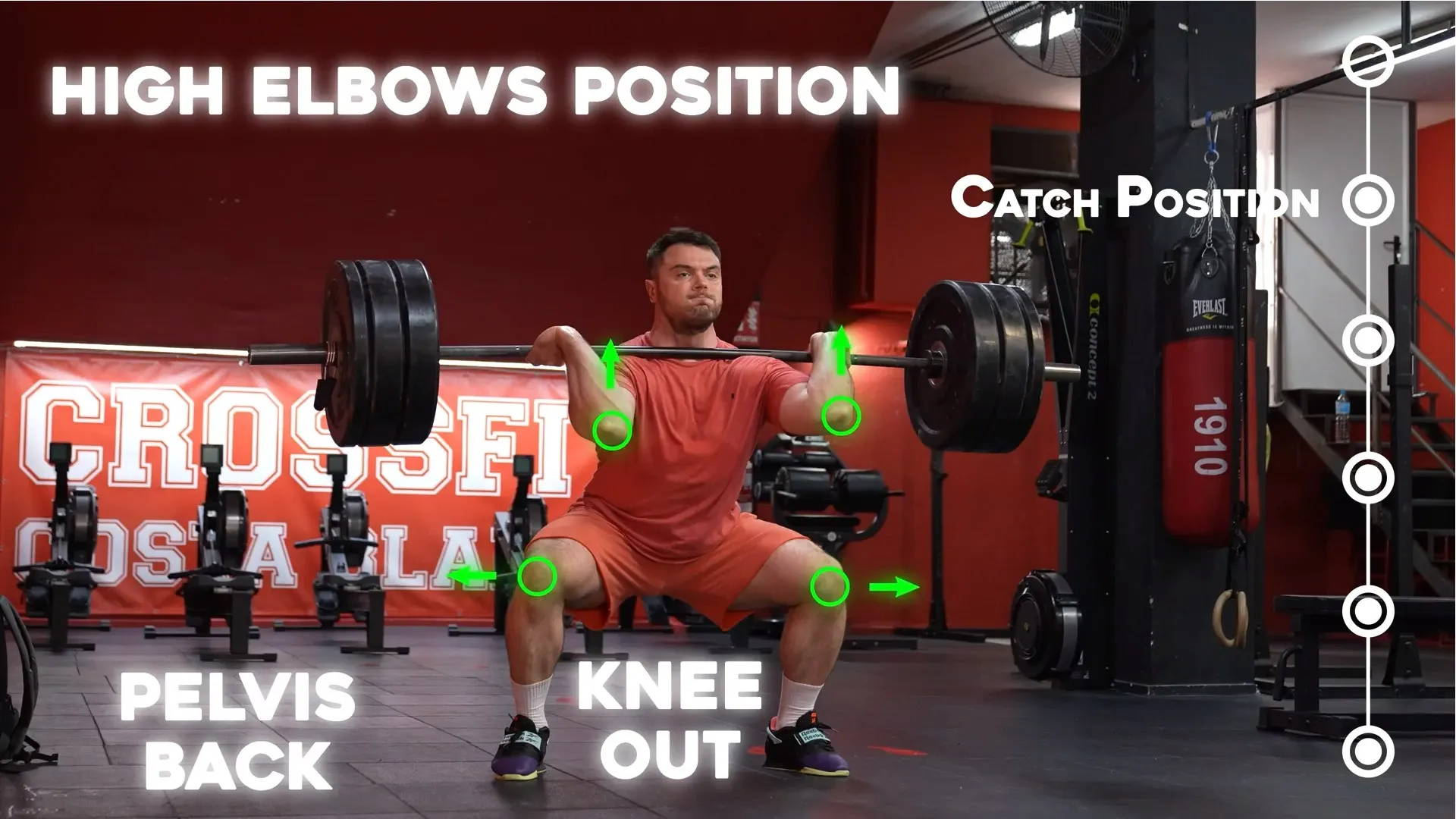
5. Recovery
Immediately stand up from the catch position by driving hips upwards and extending knees. Use bar oscillation during catch and recovery.
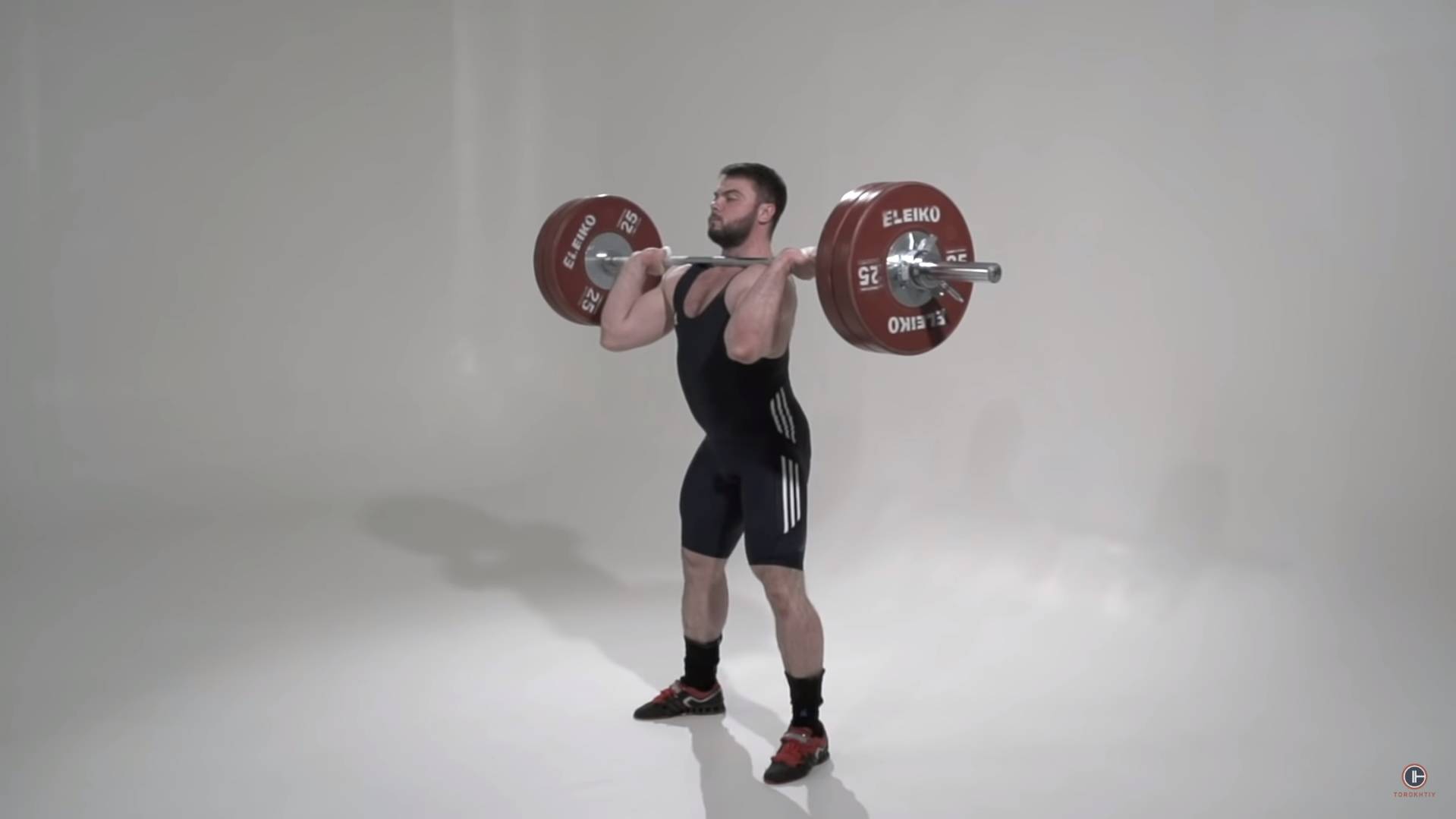
Torso should remain upright and the bar should remain stable on the front rack.
This completes the “clean” part of the C&J exercise.
6. Jerk Dip
Setup grip and feet stance if needed (supposed to be around shoulder width apart), and prepare for the jerk phase. Lower your body to around one third of squat by bending knees out and hips slightly back. Keep the torso tight & upright, and the bar should remain in contact with shoulders. Make sure your arms are relaxed.
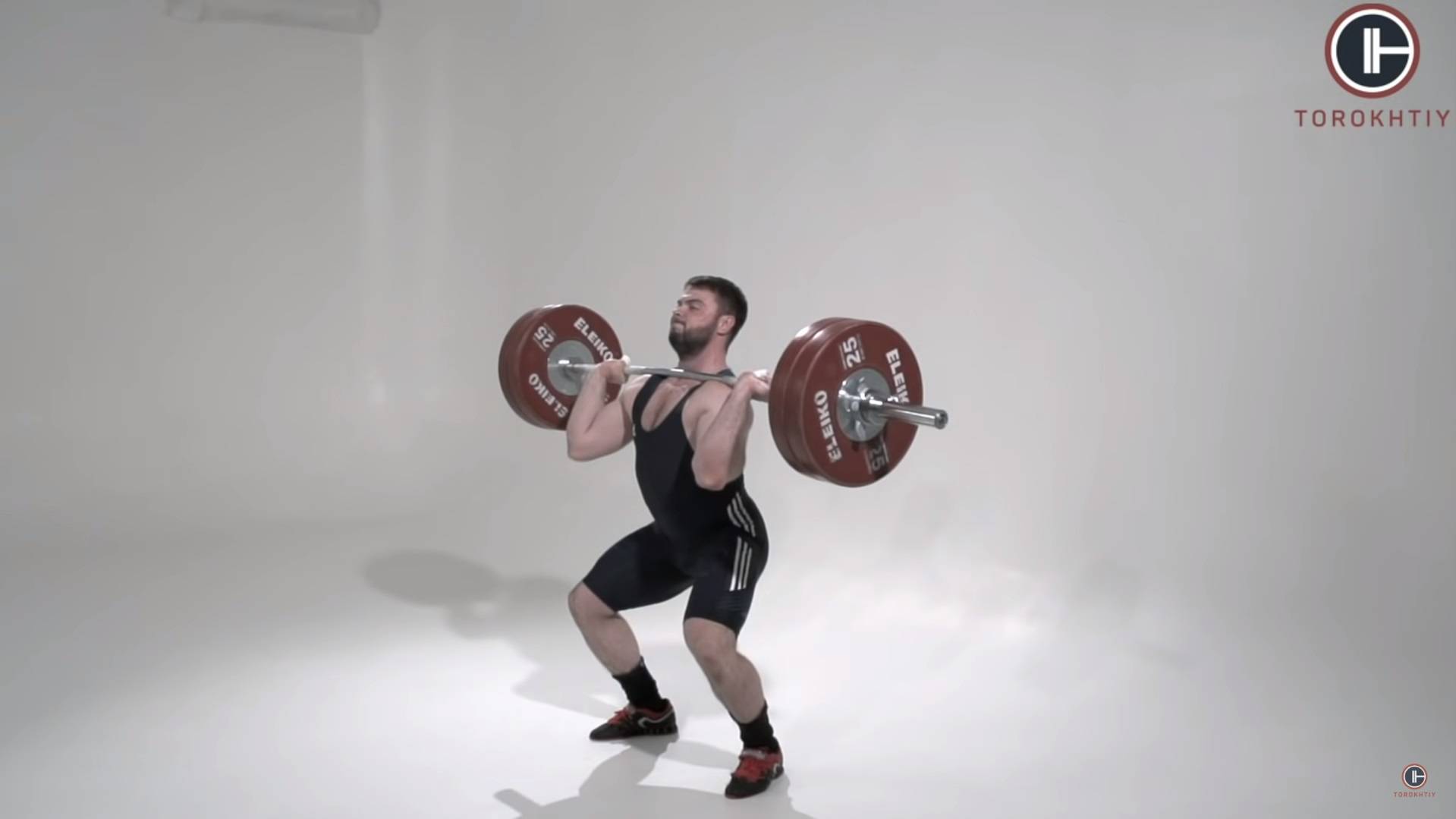
7. Drive
From the one third of squat (dip position), explosively drive upward by aggressive jump (extending your knees and hips), sending the bar up off your shoulders.
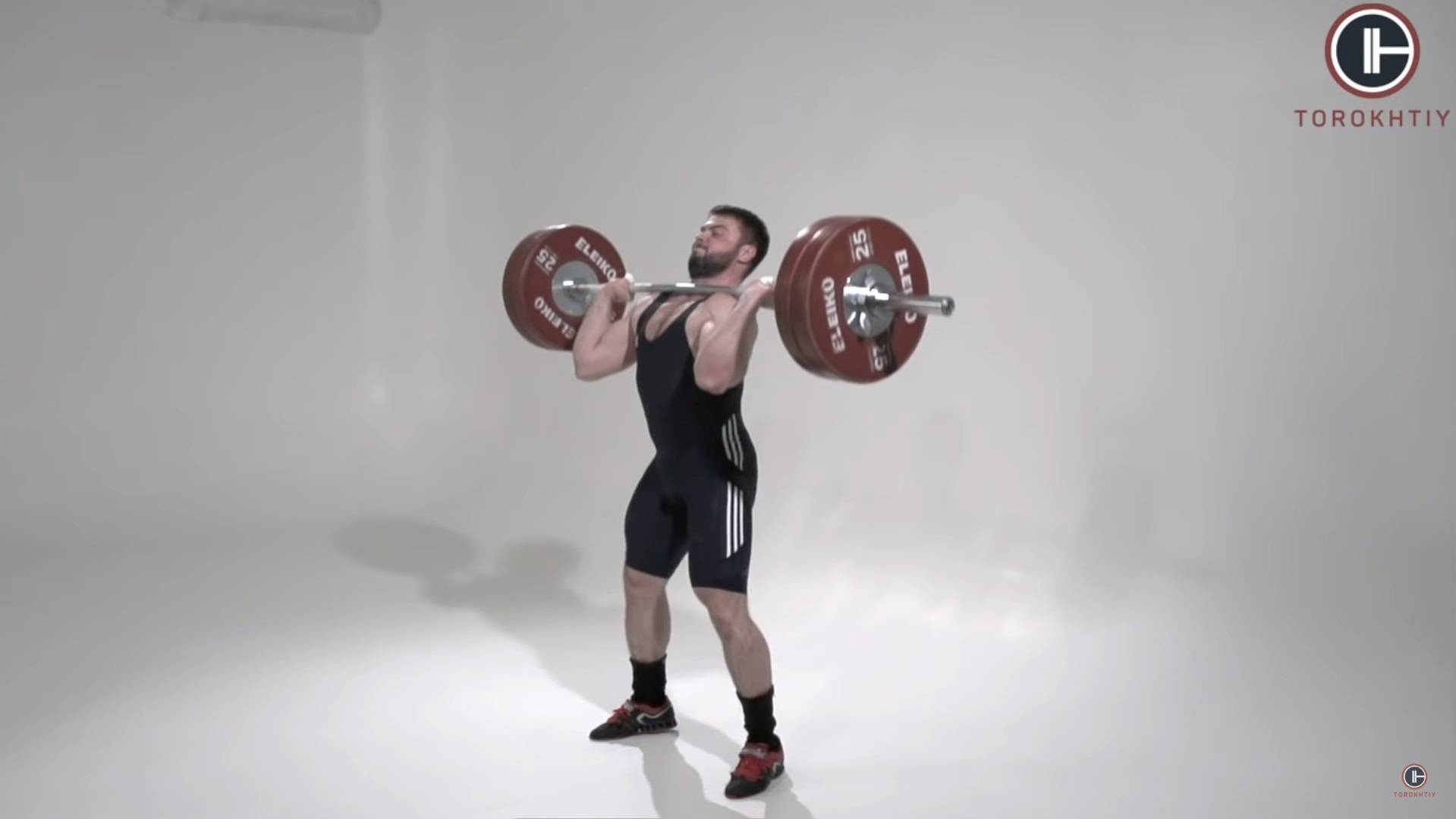
8. Catch in Split or Power Jerk stance
After the bar will reach maximum height and will ascend, quickly split legs into a lunge position (one foot forward and one foot back, if you perform SPLIT JERK) or just move feet out (if you perform POWER JERK), while simultaneously extending your arms to catch the barbell in overhead.
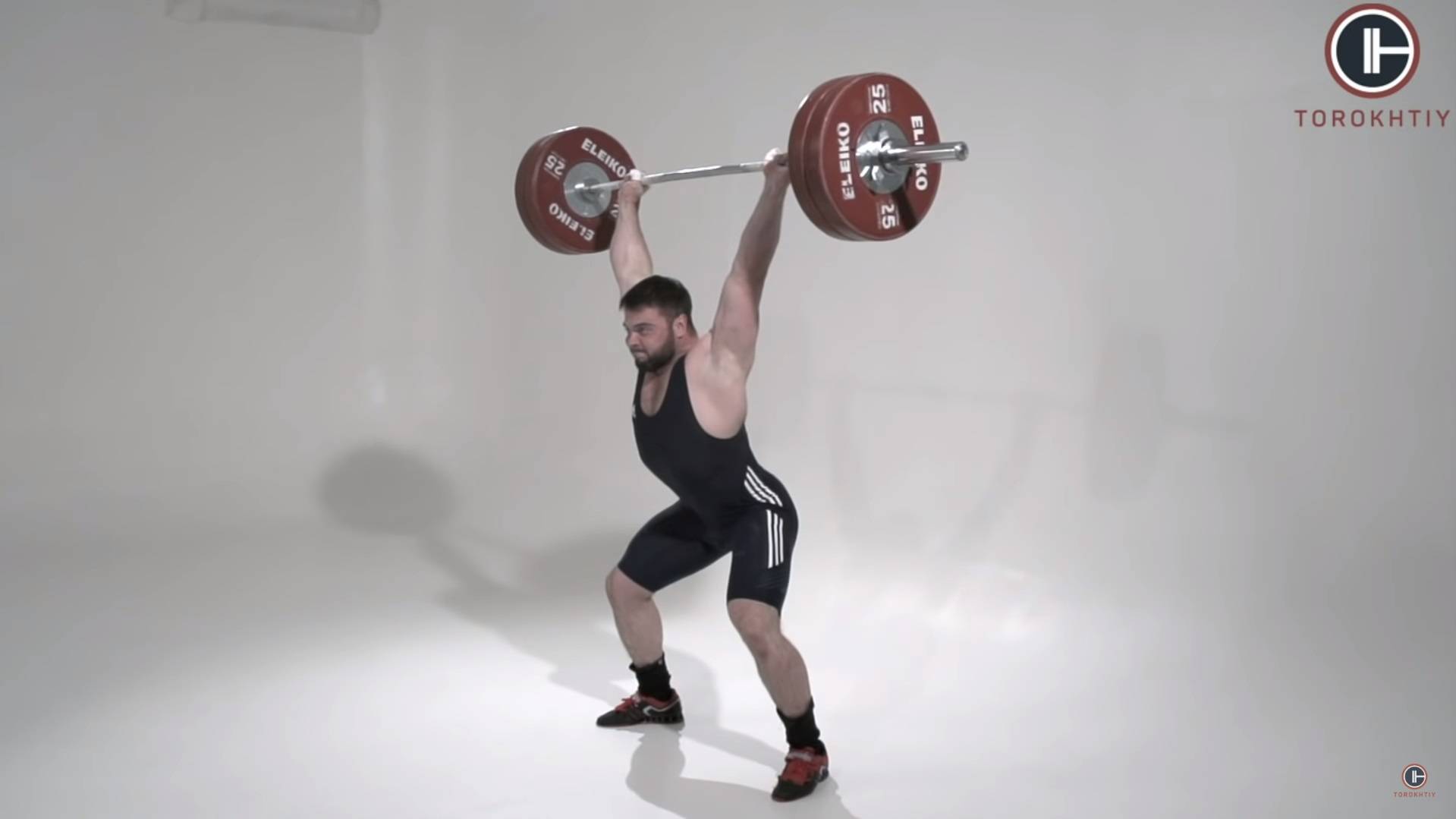
9. Recovery from Jerk Catch Position
No matter what your JERK style, bring your feet back together, standing tall with the barb still overhead and your arms fully extended. Make sure your body is stable and balanced before lowering the bar on the platform or performing more JERK reps.
Follow us!

Free!
Get a 2-week Weightlifting Program as a bonus for the subscription to kickstart your training plan!

Free!
FAQ
Is Clean And Jerk Hard?
Yes, the clean and jerk is indeed a challenging movement. It requires not just significant strength, but also a high level of technical skills, coordination, and mobility. It demands substantial practice to master. However, while it may be tough, the immense benefits it offers make it an exciting and rewarding journey for those who are ready to work really hard.
Does Clean And Jerk Build Muscle?
It can, but it depends on how you do it. Building muscle is less about the exercise selection and more about how you apply it. The clean and jerk, being a compound exercise, engages multiple muscle groups at the same time. If you use the right technique and intensity, you’ll stimulate muscle growth and improve strength.
Remember that building muscle is a process that requires proper volume, intensity, progressive overload, proper nutrition, and a smart approach to recovery for the best results.
What Does Clean And Jerk Work?
The clean and jerk is a full-body compound drill that engages multiple muscle groups. It targets legs (glutes, quads, hamstrings, calves), back muscles (lats, the erector spinae, trapezius rhomboids), arms (delts, triceps, forearm muscles), and the obliques and abdominals. This makes it a comprehensive exercise for developing power and strength endurance.
Conclusion
If you’re ready to embark on a fitness journey, the Clean and Jerk presents a remarkable opportunity. It offers a full-body workout that engages multiple muscle groups, burns calories, develops power and explosiveness, enhances coordination and mobility, and strengthens bones. It’s an all-in-one package that can take your fitness to new heights.
Now you turn to ask questions and share your feedback in the comment section.
References:
- Mineral Density and Markers of Bone Remodelling in Young Athletes in Response to Weightlifting Exercise // Researchgate: https://www.researchgate.net/publication/357094926.
- CORE MUSCLE ACTIVITY DURING THE CLEAN AND JERK LIFTs // NCBI: https://www.ncbi.nlm.nih.gov/pmc/articles/PMC4637915/.
- Kinematic analysis and optimization of jerk using elasticity of weightlifting bar in clean & jerk // Researchgate: https://www.researchgate.net/publication/371260304.
- Comparison of Weightlifting, Traditional Resistance Training and Plyometrics on Strength, Power and Speed // NCBI: https://www.ncbi.nlm.nih.gov/pmc/articles/PMC9213388/.
- Photos by Torokhtiy Media team; sciencephoto, Canva.com; decade3d, Canva.com; Wirestock, Canva.com.
Why Trust Us?
With over 20 years in Olympic weightlifting, strength training, nutrition coaching, and general fitness our team does its best to provide the audience with ultimate support and meet the needs and requirements of advanced athletes and professional lifters, as well as people who strive to open new opportunities and develop their physical capabilities with us.
By trusting the recommendations of our certified experts in coaching, nutrition, and sports training programming, as well as scientific consultants, and physiotherapists, we provide you with thorough, well-considered, and scientifically proven content. All the information given in the articles concerning workout programming, separate exercises, and athletic performance, in general, is based on verified data.
The product testing process is described in more detail here.
Author: Sergii Putsov
Head of Sport Science, PhD
Best Results: Snatch – 165 kg,
C&J – 200 kg
Sergii Putsov, Ph.D., is a former professional weightlifter and National team member, achieving multiple medals in the 94 kg weight category at national competitions. With a Master’s degree in “Olympic & Professional Sport Training” and a Sport Science Ph.D. from the International Olympic Academy, Greece, Sergii now leads as the Head of Sport Science. He specializes in designing training programs, writing insightful blog articles, providing live commentary at international weightlifting events, and conducting educational seminars worldwide alongside Olympic weightlifting expert Oleksiy Torokhtiy.
Reviewed by: Oleksiy Torokhtiy
Olympic Weightlifting Champion, PhD in Sport Science
Best Results: Snatch – 200 kg,
C&J – 240 kg
Oleksiy Torokhtiy is a professional athlete boasting 20 years of experience in Olympic weightlifting. With multiple European and World titles under his belt, he has showcased his prowess in two Olympic Games (Beijing 2008 and London 2012). Upon concluding his illustrious career, Oleksiy dedicated himself to coaching. By 2022, he had conducted over 200 weightlifting seminars worldwide. He is the visionary behind an international sportswear and accessories brand known for its motto, “Warm Body Cold Mind.” Additionally, he is an esteemed author and the creator of a series of training programs and eBooks.




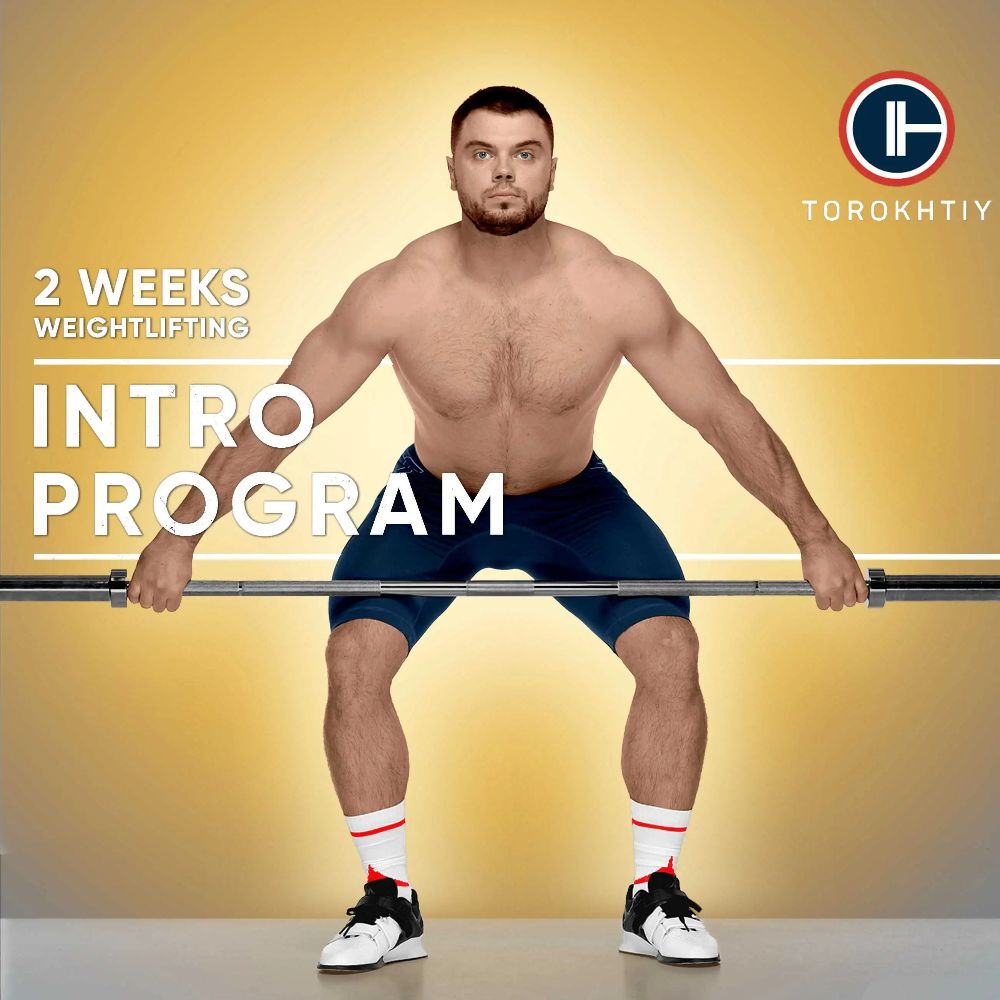
Still have questions after reading our article? Unlock your full potential by engaging with our experts and community! Don’t hesitate — leave a comment below and Sergii Putsov will provide a personalized answer and insights to help you reach your goals.